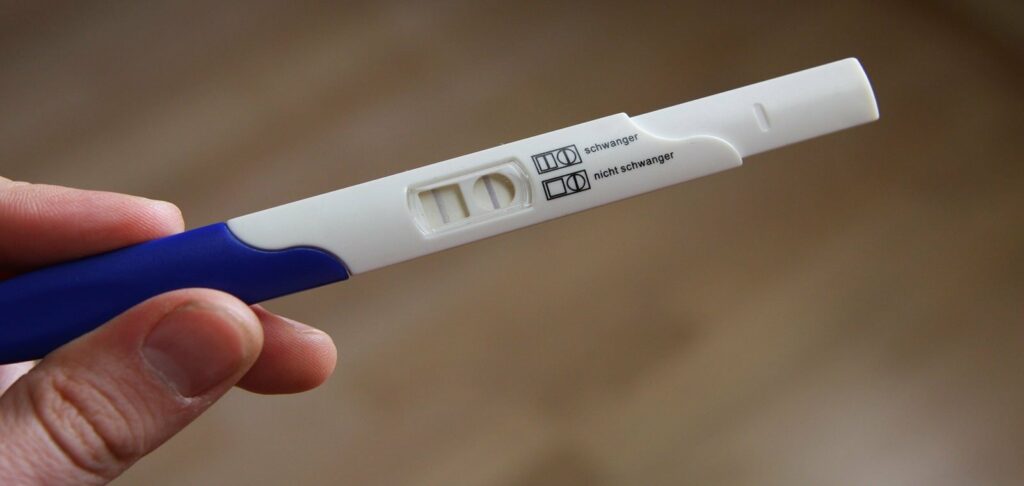
Some women do not trust home pregnancy tests, although the cause of errors is often due to improper handling.
A little history
The problem of diagnosing pregnancy has worried mankind since ancient times. Thus, the first test appeared in ancient Egypt. At that time, it was enough for a woman to urinate on a certain plant and, if it blossomed, to expect a soon addition to the family. History is silent about how fair the evidence of such an “experiment” was, but it is known that medicine learned to accurately detect early pregnancy only a little more than half a century ago.
The principle of action of all modern tests is based on determining the presence in the urine of a special hormone – human chorionic gonadotropin (hCG), which the future placenta begins to secrete from the very first day of its existence. Moreover, the concentration of this hormone in the blood and urine during the first trimester of pregnancy is constantly increasing. Chorionic gonadotropin blocks the function of the ovaries to produce the next egg, thus preventing secondary pregnancy.
The sensitivity of modern tests allows to detect hCG in a negligible concentration, which makes it possible to diagnose pregnancy from the first day of the expected, but not occurred menstruation, that is, on the 10-15th day after fertilization.
The mechanism of action of home tests is simple. The test and control sections of the strip are coated with reagents (labeled antibodies to hCG). During testing, urine flows through the capillaries of the strip and reaches the test section. If there is hCG in it, the reaction products reveal a clear colored line in the control area, which indicates the presence of pregnancy. If there is no hCG in the sample, the band does not appear in the reference zone.
Test strips
The first home pregnancy test was developed in the early 1970s. Its accuracy was extremely low, and the results had to wait at least two hours. Over time, the tests were improved, and in 1988 the first so-called rapid tests, or test strips, were produced. Despite some shortcomings, this development proved to be very successful. Suffice it to say that even today most of the home tests on the market belong to this category.
The main advantage of such tests, first of all, is their low price. Many women prefer to buy several such tests from different manufacturers at the same time and compare their readings to improve the accuracy of the result. However, in many cases, such reassurance is unnecessary, because most often the reason for erroneous results is not the inaccuracy of the test strips, but the violation by women of the instructions for their use. That is why, when helping a pharmacy visitor to choose a test, the pharmacist should draw her attention to such parameters as the duration and time of testing (either only in the morning, when hCG concentration is highest, or at any time of the day), the shelf life of the test, its sensitivity and accuracy.
A significant disadvantage of test strips is the need to wait long enough for the result (at least 10-15 minutes). In addition, the lines on the paper base are often blurred, which makes it difficult to interpret the result.
Tablet tests
The onset of pregnancy, whether it is desired or not, is an intimate and complex moment in every woman’s life. And the task of a pharmacist, as a specialist in her field, is not only to advise her on the choice of a test, but also to give her professional advice, because this is the time when a woman needs support and understanding the most.
The next stage was the so-called tablet tests. However, they have not been widely used, and the main reason for this is the inconvenience of use. In order to conduct a test, you need to collect urine in a special container, pour it into a pipette, apply it to a tablet with a reagent and only then, after 3-5 minutes, get the result.
However, despite some inconveniences, tablet tests are in many ways superior to their predecessors. One tablet test may well become an alternative to a “safety” kit of several test strips from different manufacturers.
Jet tests
Third-generation home tests, or inkjet tests, appeared in 1996, although they hit the shelves of domestic pharmacies much later. They are modified test strips in which paper is replaced by latex, which reduced the duration of testing to one minute. In addition, these tests are hygienic, convenient and easy to use. In order to perform the test, it is enough to place them under the urine stream for a few seconds and get the result in a minute.
Jet tests are more sensitive, which makes it possible to perform the test not only in the morning, but also at any time of the day. In terms of accuracy, they are quite comparable to laboratory tests that determine the level of hCG in the blood. The only significant disadvantage is their rather high price. However, if this does not stop the pharmacy visitor, you can safely advise her to choose this option.
Why does a pregnancy test give wrong results?
- The test was performed incorrectly. When performing the test, the instructions should be strictly followed. In addition, there are general rules for performing tests. For example, the urine sample must be collected in a clean and dry container. It must not be shaken, frozen or stored in the refrigerator for more than a day. Urine samples and test kit components must be at room temperature before testing.
- The test is done too early. The test can detect hormonal changes no sooner than two weeks after fertilization of the egg. If the test is done before the hCG concentration reaches the required level, it will give a false negative result.
- Dysfunctional ovarian diseases. In such diseases, the production of various sex hormones is disturbed, and the overall picture leads to an erroneous test result.
- Abnormal pregnancy: In some cases, the pregnancy may be abnormal and cannot be detected by the test. In addition, if there is a threat of miscarriage, a previously positive test can suddenly become negative. Sometimes a negative result is the first sign of an aborted pregnancy.
- Taking hormonal drugs: Taking hormonal drugs (especially those containing hCG) can significantly affect the result of the test. Traces of this hormone remain in the body for 10 days after the last intake of the drug, and, accordingly, the pregnancy test can give a false positive result.
- Poor-quality test: Most often, the test can be expired or spoiled due to improper storage. Therefore, after a home test, it is worthwhile to undergo an ultrasound or clinical hormone tests.



